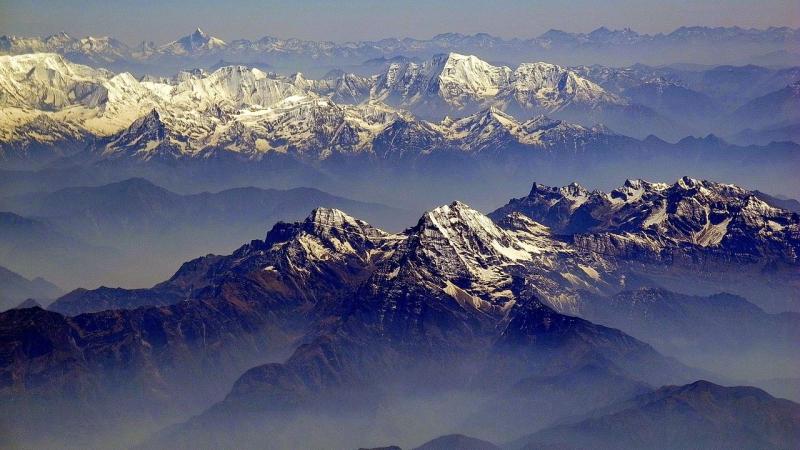
The mountain passes of the Hindu Kush have special significance to India’s history as it is through these routes that conquerors like Alexander, Taimur and Babur set foot into the country. These mountains, part of the greater Hindu Kush Himalayan region, have witnessed the passages of languages, literature, mythologies, and religions for over centuries and have shaped our history as we know it. Unfortunately, the mountains that have withstood the test of time and witnessed some of the greatest conquests in history, may not stand up the changing climate, a new report reveals.
The report is called The Hindu Kush Himalaya Assessment: Mountains, Climate Change, Sustainability and People, and is a part of the Hindu Kush Himalayan Monitoring and Assessment Programme (HIMAP). HIMAP is a long-term, integrated science-policy initiative coordinated by the International Centre for Integrated Mountain Development (ICIMOD). The report is a significant milestone of a process that is trying to bring together researchers, policymakers and the public for protecting the environment and its inhabitants.
The Hindu Kush Himalayan region, spread over 4.3 million square km, extends from Afghanistan to Myanmar and covers eight countries. It is the source of ten large river systems including the Brahmaputra, Indus and Ganges in India, and supports unique biodiversity. This region, along with the Tien Shan mountains in Central Asia, represents the largest area of permanent ice cover outside the two poles of our globe, and is thus also referred to as the ‘third pole’. About 240 million people living in the mountains and 1.9 billion people in the river basins downstream depend on these mountains for their livelihood.
However, with climate change, infrastructure development, and urbanisation, the fragile ecosystem of this region is taking the brunt. Although we do not exactly know how these factors have affected the area as there is not enough data, the current report has tried to comprehensively assess the challenges faced in this region so that policymakers could use them for making decisions based on facts and evidence. These decisions will have repercussions on the environment and its inhabitants.
The extensive report discusses a broad range of issues related to this region like climate change, biodiversity, energy, cryosphere (frozen water), water availability, air pollution, disaster risk reduction, and adaptation to climate change. It also discusses issues like poverty, gender and inclusive development, and migration of people.
The Hindu Kush Himalaya is a treasure trove of biodiversity and harbours more than 35,000 species of plants and 200 species of animals. In just ten years, from 1998 to 2008, 353 new species were identified from the Eastern Himalaya, including 242 plants, 16 amphibians, 16 reptiles, 14 fish, two birds, and two mammals. With habitat loss, pollution, and climate change taking a toll on this diversity, the report estimates that a quarter of endemic species in the region might be wiped out by the year 2100. While keystone species in the region, like snow leopard, tiger, and rhinoceros, have specific conservation programs designed around them, some species like the red panda has not yet received sufficient attention, says the report.
An alarming finding of the report is the threat to the glaciers in the region from global warming. “Even if global warming is kept to 1.5°C in the future, the warming in the Hindu Kush Himalayan region will likely be at least 0.3°C higher”, it warns.
Assuming we are successful in limiting the increase in global warming to 1.5°C, more than third of the glaciers would melt down, impacting the availability of water in the region, its ecology and economy.
Interestingly, although glaciers and snowmelt contribute to the stream flows, their contribution is not uniform, says the report. West-flowing rivers, like the Indus, receive a higher amount of water, while east-flowing rivers, like the Ganges, which is highly dependent on the summer monsoon, receive a lower contribution from the snowmelt. The springs in the region, which support 80% of rural households in Sikkim and feed 64% of irrigated areas in the Indian Himalayas, are also drying up, says the report.
The increasing air pollution in the Hindu Kush Himalayas is influencing the melting of the cryosphere and the distribution of rainfall too. For example, the Yala Glacier in the Central Himalayas is found to be affected by the pollutants from Nepal and India and has occasional contributions from regions like Africa and the Middle East. Winter fog and haze, which reduce crop yields and impact daily life, is an emerging challenge.
Although the region is full of resources, the quality of life of people here is not satisfactory, the report finds. For instance, the area has a huge potential for generating hydropower to the tune of 500 GW, but about 400 million people living here do not have access to electricity. Similarly, more than 30% of people do not have sufficient access to food and around 50% of them, mainly women and children, suffer from some form of malnutrition. Besides poverty and inadequate policy support, factors like natural resource degradation and climate change are exacerbating these problems. In addition, more than one billion people living here are at a higher risk of being exposed to frequent and intense natural hazards.
The information in the report also predicts some unfavourable future scenarios if things continued the way they are. It helps design steps to mitigate and adapt to climate change, reduce disaster risk, and adopt good governance. These steps would then ensure prosperity in the Hindu Kush Himalayan region, says the report.






